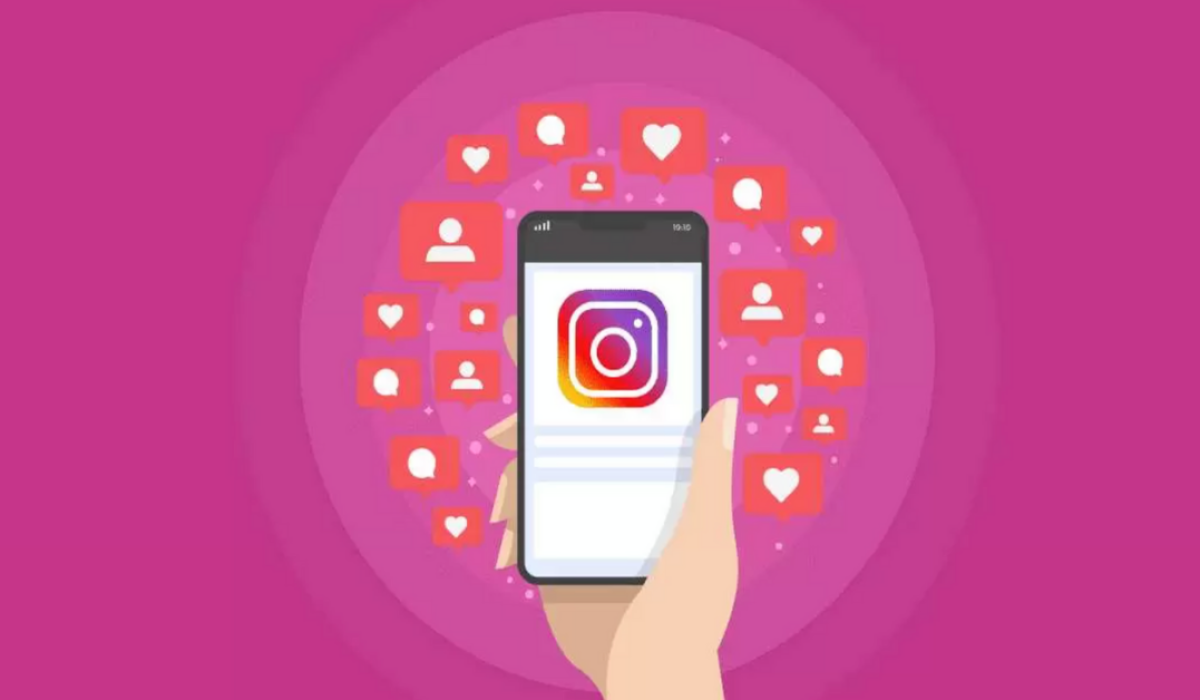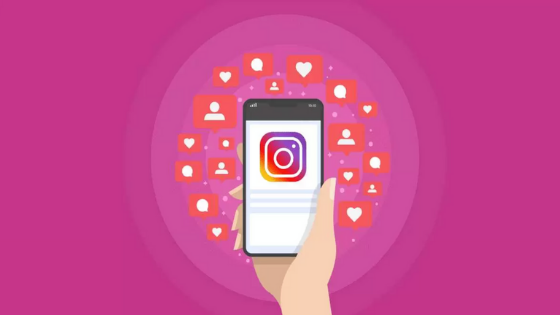Have you ever found yourself falling into a rabbit hole of Insta-scrolling? Well you’re not alone. In a bid to constantly enhance the user experience, Instagram has made it a mission to show you only the most relevant content that you’re likely to engage with. That means understanding how the Instagram algorithm works will help you develop a strategy to improve your visibility and ultimately grow your following on the platform.
But with Instagram constantly making changes and evolving its algorithm, it can be difficult to keep track of. So how exactly has the Instagram algorithm changed since 2021? We’ll take a closer look…
What Is the Instagram Algorithm?
The Instagram algorithm isn’t a single algorithm but rather a combination of algorithms, processes, and classifiers that work to personalise the individual user experience. Instagram initially used a simple chronological algorithm that displayed posts in order of how they were created. But the Instagram algorithm in 2022 has become a highly sophisticated system for determining which content to display to each user based on what they care about the most.
According to Instagram, each part of the app uses its own algorithm. That means the Feed algorithm works differently from the Explore page algorithm. And the Explore page uses a different algorithm from Reels. This is because how users typically interact with different parts of the app varies. For example, people tend to look for Stories from their closest friends but would want to discover fresh content when they go to the Explore page.
This sophisticated ranking system ensures that the user experience is highly personalised according to each user’s preferences. That means no two users will see the exact same thing on their Explore page. Similarly, even if the same person manages different accounts, the content recommendations won’t exactly be the same across those accounts.
How Instagram Ranks Feed Posts and Stories
Instagram users want to see content from friends and family in their Feed and Stories. So the ranking process for these two is more or less the same. Aside from the occasional ad, your Feed and Stories will only display content from people you follow.
In order to accurately rank the content in your Feed and Stories, Instagram prioritises the following signals:
- Post information – The Instagram algorithm looks at the popularity of a post in terms of likes. It also considers other minor details like post timing, duration (in the case of videos), and location (if any).
- Information about the poster – To get a sense of how important the person is to you, Instagram considers signals like how often you interact with the person and whether those interactions are recent.
- User activity – Instagram tries to understand what you might be interested in based on factors such as how many posts you’ve liked and what types of content you tend to engage with.
- Interaction history – Instagram tries to get a better idea of your general interest in seeing content from a particular user by looking at signals like whether or not you comment on their posts and vice versa.
The Instagram algorithm then uses all of this information to make predictions on how likely you are to interact with a given post. For example, in the Feed, it will look closely at how long you are going to spend looking at the post, how likely you are to comment on it, like it, or save it, and how likely you are to check out the profile. So posts that you see high up in your Feed are ones that the algorithm considers you’ll most likely take an action on.
How the Instagram Explore Page Algorithm Works
The main goal of the Explore page is to introduce you to new things. So although Instagram still delivers content based on what you’ll be most interested in, most of the posts will come from accounts you don’t follow.
To determine which posts to rank, the algorithm first looks at posts you’ve interacted with in the past. It then finds out who else has interacted with those posts and what other accounts they’re interested in. This helps the Instagram algorithm to narrow down which posts to rank for your Explore page.
After finding a group of posts you might be interested in, Instagram then ranks them using the following signals:
- Post information – Instagram looks at the popularity of a post based on how many likes, comments, and saves it’s received. But these signals weigh much more heavily for the Explore page than for Feed and Stories.
- Interaction history – Although the post may be from an account you don’t follow, Instagram can understand how interested you are in their content based on whether you’ve interacted with their posts in the past.
- User activity – Instagram considers the posts you’ve liked, shared, and commented on. It also looks at the history of how you’ve interacted with other posts in your Explore page.
- Information about the poster – Instagram also considers information about the poster such as how much interaction they’ve received in the past few weeks. This helps the algorithm to find high-quality content from a wide range of users.
How Instagram Ranks Reels
The main goal of Instagram Reels is to entertain. As a result, many of the videos you see will come from accounts you don’t follow. It’s very similar to the Explore page in that aspect. The main difference is that instead of just considering what you might be interested in, Instagram focuses specifically on content that might entertain you.
Instagram makes important predictions such as how likely you are to watch a Reel until the end and engage with it. Another important consideration is how likely you are to visit the audio page because this could signal whether or not you’d want to make your own Reel. The most important ranking signals for Instagram Reels are:
- User activity – Instagram looks at the Reels you’ve interacted with recently to get a better understanding of the content that might be relevant to you.
- Interaction history – Some of the videos you see might be from accounts that are new to you. But if you’ve interacted with them in the past, it helps Instagram understand how interested you might be in their content.
- Reel information – Signals about the content elements in a Reel also help Instagram to rank videos appropriately. This may include information like audio tracks and popularity.
- Information about the poster – When it comes to Reels, the algorithm tries to give everyone an equal chance to find their audience. So smaller creators and new accounts have a chance to shine and reach a wider audience. Video popularity is an important consideration so the algorithm can display content from a wide range of people.
What Instagram Avoids Recommending
Although Instagram aims to give people a place to express themselves, it also prioritises safety most of all. That’s why it sometimes takes down posts that are potentially harmful and go against their Community Guidelines. Additionally, the algorithm limits the visibility of certain content that is:
- Labeled as misinformation by third-party fact-checkers. These are displayed less prominently in Feed and Stories
- Potentially upsetting or sensitive. For example, content that promotes vaping or tobacco are not shown in the Explore page or Reels
- Political in nature i.e. focusing on political issues or are created by/on behalf of political parties and figures as well as government officials
- Low-resolution or watermarked
Tips to Make the Instagram Algorithm Work for You in 2022
Regardless of whether you’re trying to rank on Explore, Reels, or Feed, the number of interactions you get plays a major role in your content visibility. So if you want to make the Instagram algorithm work for you, it’s important to create content that drives a ton of likes, shares, comments, and even saves.
Want to be the first to the latest news in social media? Subscribe to our email newsletter and we’ll send the latest updates straight to your inbox every Friday morning.






